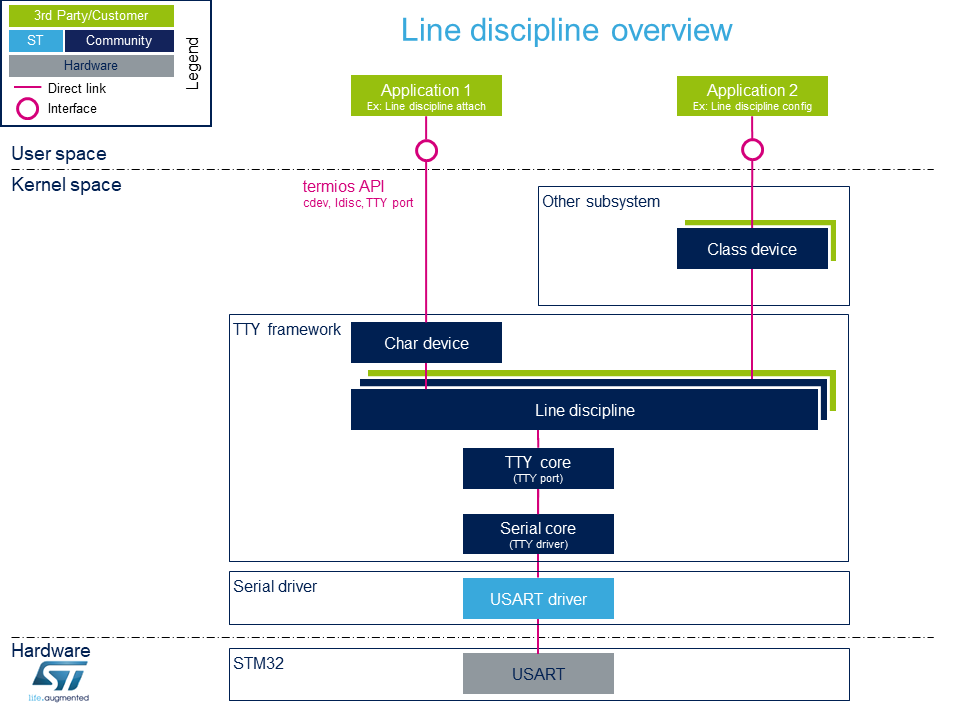This article gives information about the Linux® TTY framework. It explains how to activate the UART interface with line disciplines, and how to access it from user and kernel spaces.
1. Framework purpose[edit source]
UART is a common interface for several device types, such as Bluetooth, NFC, FM Radio and GPS devices.
Since kernel version 4.12, the serial device bus (also called Serdev) has been introduced in the TTY framework to improve the interface offered to devices attached to a serial port. Please refer to the Serial TTY overview article for a detailed description of the TTY framework purpose. Nevertheless it's still possible (even if not recommended) to use line disciplines "drivers".
This article focuses on the line discipline interface offered to devices attached to a serial port.
2. System overview[edit source]

2.1. Components description[edit source]
From client application to hardware
- Application: customer application to read/write data from the peripheral connected on the serial port.
- TTY tools: tools provided by Linux community, such as stty, ldattach, inputattach, tty, ttys, agetty, mingetty, kermit and minicom.
- Termios: API[1] which offers an interface to develop an application using serial drivers.
- Client subsystem: kernel subsystem client of TTY core (Example: a Bluetooth device)
- TTY framework: high-level TTY structures management, including tty character device driver , TTY core functions , line discipline.
- Serial framework: low-level serial driver management, including the serial core functions .
- USART driver: stm32-usart low-level serial driver for all stm32 family devices.
- STM32 USART: STM32 frontend IP connected to the external devices through a serial port
2.2. APIs description[edit source]
The TTY provides only character device interface (named /dev/ttyX) to user space.
The main API for user space TTY client applications is provided by the portable POSIX terminal interface termios, which relies on /dev/ttyX interface for TTY link configuration.
The termios API[1] is a user land API, and its functions describe a general terminal interface that is provided to control asynchronous communications ports.
The POSIX termios API abstracts the low-level details of the hardware, and provides a simple yet complete programming interface that can be used for advanced projects. It is a wrapper on character device API [2] ioctl operations.
For example, a kernel driver maybe needed to control an external device through an U(S)ART port.
- The line discipline will be responsible for:
- creating this new kernel API
- routing data flow between serial core and new kernel API
3. References[edit source]
- ↑ 1.0 1.1 termios API, Linux Programmer's Manual termios API Documentation (user land API with serial devices)
- ↑ Character device API overview, Accessing hardware from userspace training, Bootlin documentation